- Before the plaster is dry, do not put any clothes on the plaster. Do not touch sharp objects and heavy objects to avoid pressure and change shape
- When the limbs in the plaster are itchy, the cold air from an electric fan or a hair dryer can be used to blow the plaster opening
- After putting on the plaster, pay attention to the circulation of the end limbs. If there is any abnormality, seek medical attention.
- Mainly used for temporary immobilization and immobilization of damaged limbs.
- Fixation, support and protection after fracture reduction during fracture healing.
- Immobilization of the affected limb during post-operative recovery.
- Early support, weight bearing, prevention and correction of deformity, and promotion of rest of the affected limb.
- The plaster is made of resin plaster (picture 1), and it takes about 20 minutes to completely dry. During the drying process of the plaster, there will be a feeling of heat, which is a normal phenomenon. Before the plaster is dry, use a soft pillow to raise the limbs to reduce swelling and avoid Plaster deformation.
- Before the gypsum is dry, use an electric fan to speed up the drying of the gypsum.
- Before the plaster is dry, do not put any clothes on the plaster. Do not touch sharp objects and heavy objects to avoid pressure and change shape.
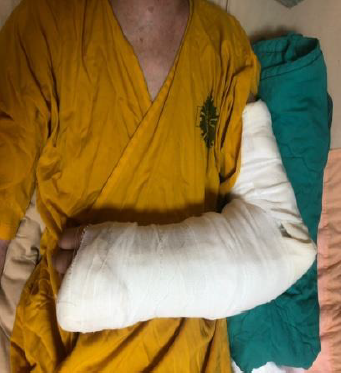
Figure 1. resin plaster
- Do not wash plaster cast for any reason. You may wipe dirt spot with a damp cloth,if the plaster cast gets dirty.
- When taking a bath, a plastic cover should be put on to keep the plaster dry.
- Do not put any items - such as bamboo pieces into the plaster or scratch it, so as to avoid skin damage and infection.
- When the limbs in the plaster are itchy, the cold air from an electric fan or a hair dryer can be used to blow the plaster opening.
- Patients who use hip spica, as shown in picture 2, should sit up when using the bedpan on the bed to avoid excretions flowing into the plaster, as shown in picture 3 and picture 4. For infants who still need to use diapers, it is advisable to use small diapers to line the anus and then wrap the diapers to absorb excrement and keep the plaster clean and dry.
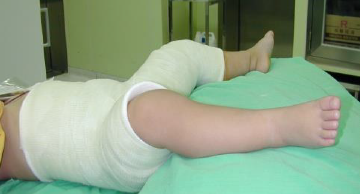
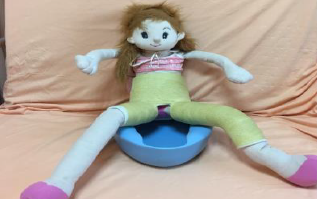
Figure 2. Hip spica Figure3. Casthead of bed raised 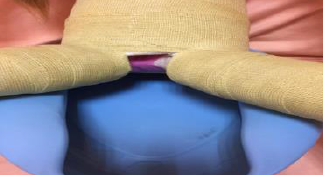
Figure4. The bedpan is placed under the buttocks - After putting on the plaster, pay attention to the circulation of the end limbs. If there is any abnormality, seek medical attention.
- The sheets and bedding should be kept flat, clean and dry, so as not to irritate the skin at the wrinkle or plaster debris.
- The plastered limbs should be raised with pillows and other objects, and be higher than the heart to help blood return, reduce swelling and pain, as shown in picture 5 and picture 6.
- For patients whose arms are immobilized by gypsum splints, they can be supported by triangular bandage or cantilever slings when getting out of bed, as shown in Figure 7 and Figure 8.
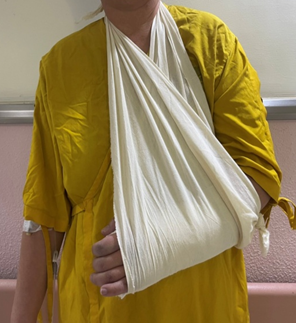
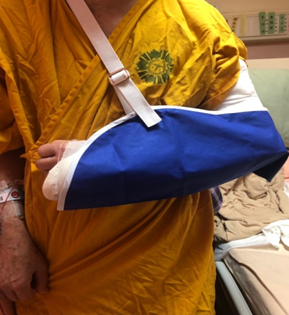
Figure7. Triangular Bandagesupport Figure8. cantilever sling support - If the lower limbs are cast, wear plaster shoes when getting up to avoid the casts being dirty as shown in picture 9.
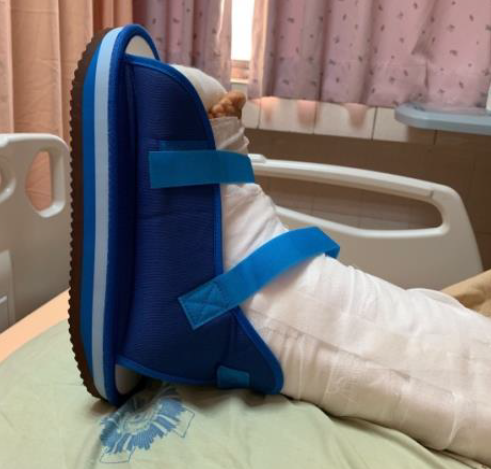
Figure 9. plaster shoes
- The fingers or toes exposed outside the plaster should be stretched and flexed frequently to help blood return and avoid muscle atrophy, such as finger grasping, foot dorsiflexion, quadriceps exercise, as shown in picture10 11 12.
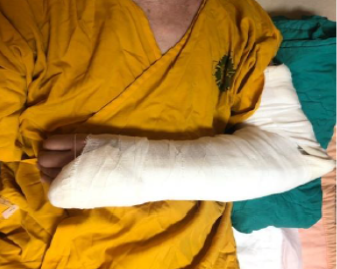

Figure10. make a fist keep 5seconds straight and relax for 5 seconds finger grip 
Figure11. Dorsiflexionexercise Arch the back of the foot up and hold for 5 secondsàPress the back of the foot down for 5 seconds and then relax 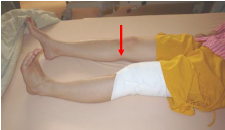
Figure 12. Quadriceps femoris muscle exercise Straighten the legs and hook the back of the foot towards the body àThe thigh and calf are forced to press the knee down - With the permission of the doctor, crutches, walkers or orthopedic wheelchairs can be used for activities, as shown in picture 13,14,15.
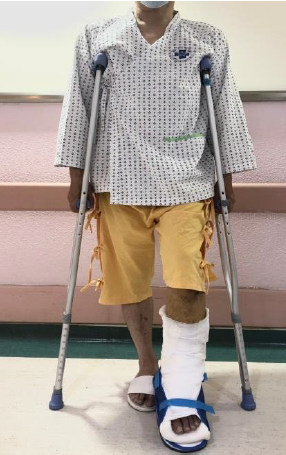
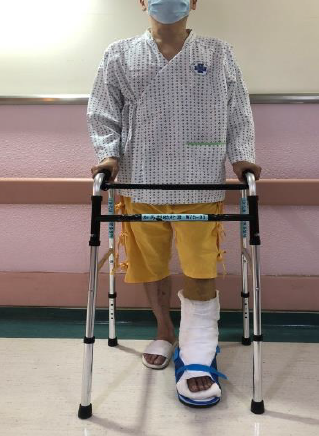
Figure 13. Crutch Figure 14. Walker 
Figure 15. Orthopedic wheelchair - You may feel swelling of the plastered limb when you get out of bed is normal. As long as you go to bed with a pillow under the cast raised above the heart, symptoms will ease.
- Return to the outpatient clinic on time according to the doctor's instructions.
-
If the following problems occur, please call 04-23592525 as soon as possible and transfer to the ward extension 6075 or the 24-hour health consultation line 04-23741353
- Increased swelling or pain.
- The nails are blue or remain pale with pressure.
- Persistent numbness.
- Cracked plaster.
- There is any odor or exudate coming out of the plaster.
VI.Instructions for removing plaster:
After the plaster is removed, the skin under the plaster usually becomes dry and crusted. It can be cleaned with neutral soap and warm water, and then apply lotion after drying. The skin is sensitive and prone to sunburn.
VII.Conclusion
Precautions for plaster care include keeping the plaster clean and dry and not sticking anything into the plaster to avoid infection. Cooperate with the doctor's treatment, elevate the plastered limb to promote blood return, and do rehabilitation exercises to prevent complications and restore health as soon as possible.
XVIII.Reference
- 袁素娟(2021)‧肌肉骨骼系統疾病之護理‧於劉雪娥總校閱,成人內外科護理下冊(八版,542-552頁)‧華杏。
- Althoff, A.D., & Reeves, R.A. (2023). Splinting. StatPearls. StatPearls Publishing.
- Conry, K. T., Weinberg, D. S., Wilber, J. H., & Liu, R. W. (2021). Assessment of Splinting Quality: A Prospective Study Comparing Different Practitioners. The Iowa Orthopaedic Journal, 41(1), 155-161.
- 位置
-
- 資料夾名稱
- English
- 上傳者
- 蔡莉筠
- 單位
- 中榮護理衛教
- 英文名稱
- Information for Patients with Plaster Cast
- 分類
- 治療
- 科別
- 英語
- 癌症照護
- 否
- 建立
- 2024-01-16 23:30:44
- 制訂日期
- 2015-08-01
- 最近修訂
- 2024-03-19 11:52:00